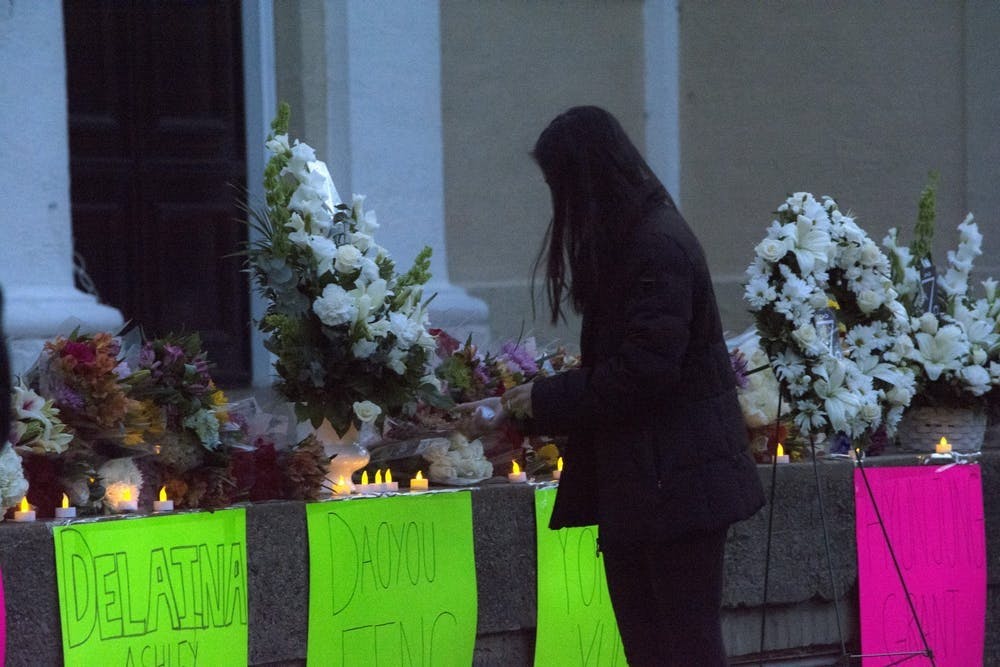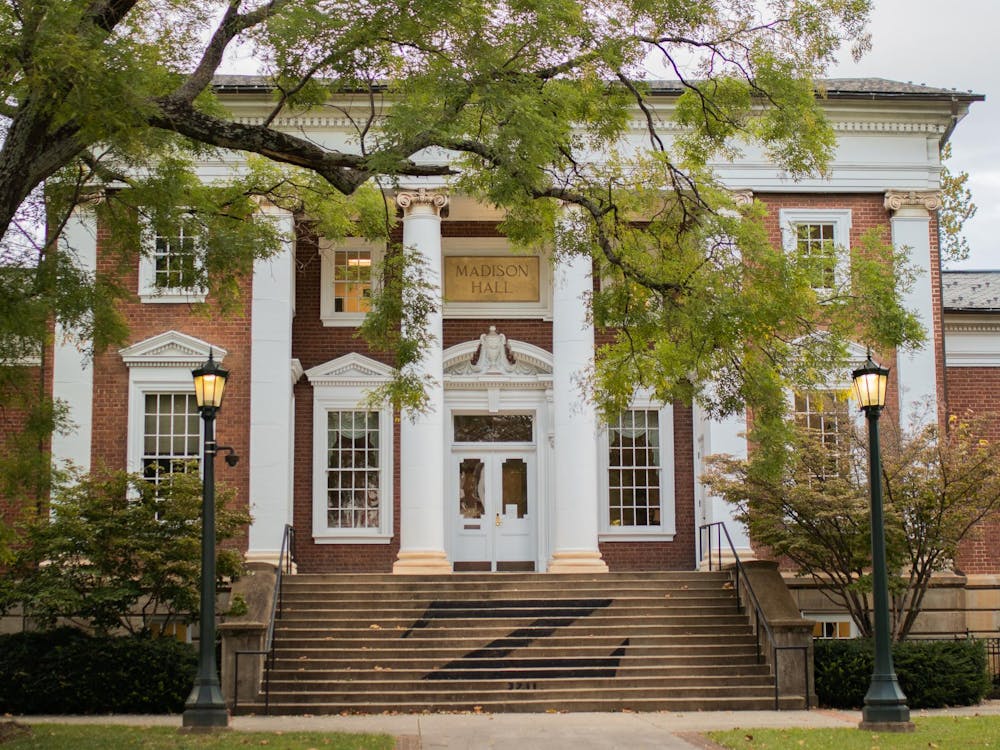Following the March 16 Atlanta Spa Shooting, the University community — including Asian student organizations, University administrators and faculty members — responded to the increase in anti-Asian violence with statements denoucing the xenophobic sentiments such violence represents. Sylvia Chong, associate professor of American Studies and English and founder of the Asian Pacific American Studies minor, titled her statement “UVA in solidarity with victims of anti-Asian violence.” Since then, students in the University’s Asian American community have continued to express sentiments of profound anger, sadness, frustration and serious concern over the country’s increase in anti-Asian violence.
Between March 19, 2020 and Feb. 28, 2021, Stop AAPI Hate, a project tracking instances of Asian hate crimes, has reported more than 3,795 reports of anti-Asian violence. When comparing pre-COVID-19 data to 2020 data, the Center for the Study of Hate and Extremism has reported a nearly 150 percent increase in hate crimes in 18 of the United States largest cities from 2019 to 2020.
For Andrea Dilao, fourth-year College student and facilitator for the Asian Pacific American Leadership Training Institute, processing events like the Atlanta shooting has been a “rollercoaster of emotions.”
“I was pretty destroyed and devastated,” Dilao said. “I immediately turned to my family, my parents, my sister and my [friends] here at U.Va. … to not even necessarily think yet. I think the thinking came after.”
During these times, Dilao said she turned to her family and friends to process, “to have our emotions and let [them] just come out.”
“As an Asian American woman … as a student and a leader in different capacities, it was just heartbreaking to have lost lives this way,” Dilao said. “For it to [be] so easy … for [the gunman] to have access to the weapons … made me sick to my stomach.”
Students from the Asian Student Union — an independent student organization whose mission is to unite and empower the University’s Asian Pacific Islander Desi American community through social, political and educational actions — have also shared their perspectives on the Atlanta Spa shootings.
“It was definitely hard,” said Sanjeev Kumar, second-year Commerce student and incoming ASU president. “[The shooting] happened 20 minutes from where I live … It was painful when I reached out to some of my friends at home and [learned] they’d gone to church with some of the families who lost individuals … I know they were definitely in pain.”
Kumar was initially confused and disoriented by the shooting because the act had “no reason other than pure hate,” and seeing its continued precipitation due to willfully ignorant individuals infuriates him. Kumar believes that rising anti-Asian sentiments are manifestations of an incredibly flawed system of white supremacy that promotes the discrimination of Asian and Asian Americans.
Kumar addressed the evidence of such prejudice beginning with the arrival of Asian migrants to America. From the yellow peril posing these individuals as here to take over the United States, to the Japanese internment camps during World War II and to the Korean and Vietnam War, Asians and Asian Americans are portrayed as the enemy.
“Even today when you see things like the model minority myth … it’s in the guise of a compliment,” Kumar said. “We’re still being used as a wedge between us and other minorities … We’re still putting down the Latinx community or the Black community … I don’t think there’s any sort of short term solution for this.”
Students like Dilao have also reflected on the significance and severity of increasing hate crimes against Asians and Asian Americans.
“Both sets of my grandparents are in the Philippines,” Dilao said. “Never once have I been thankful that they’ve been so far away, but this summer … I was internalizing how grateful I was that they weren’t here and what that says about what’s going on [in our country].”
Some members of the U.Va. community believe that news coverage of COVID-19 and rhetoric used during the Trump administration have caused the increase in Asian and Asian American hate crimes.
“A lot of large media news sources were using rhetoric like the ‘Wuhan Virus’ [and] the ‘Chinese Virus,” Kumar said. They were “painting China as this really foriegn, exotic country that breeds diseases [and] eats bats and … [continues] the narrative of Asia being [a] foreign place that can never assimilate to modern culture.”
Global Studies Assist. Prof. Helena Zeweri also believes that media rhetoric is largely associated with the Trump administration's treatment of COVID-19.
“A lot of it has to do with how the [Trump] administration fanned the flames and set the groundwork for xenophobic discourse to be mainstream in a way that it wasn’t before,” Zeweri said. “Anti-Asian phobia has always been around, but the previous administration gave it validity [by] linking it to a public health crisis.”
University community members agree that media rhetoric and previous presidential administration’s actions fueled the trend in increasing anti-Asian violence that resulted in events such as the Atlanta spa shootings.
The Atlanta murders are not an anomaly or “just a bad day,” Chong said, referencing a statement made by a Georgia sheriff’s captain in the aftermath of the shooting incident. Chong believes that the shootings send a message — “we are expendable.”
This message, according to Chong, coincides with the motive behind the lynching of Emmet Till, the Sand Creek Massacre of Cheyenne and Arapaho people in 1864, the Tulsa, O.K. Massacre of 1921 and the Zoot Suit Riots of 1943. Each event targeted a racially marginalized group as a reminder to “not step out of line, tempt their men, rape thier women, steal their jobs, invade their neighborhoods and spread our filth and disease and immorality to their safe spaces, or else we will suffer,” Chong said.
“I know Asian Americans do not want to be defined as merely victims of racist hatred, and there are many calls online not only to Stop Asian Hate, but to celebrate Asian joy, support Asian businesses [and] protect Asian communities,” Chong said. “But we can’t begin to love Asian Americans if we don’t understand the hatred against us.”
According to Zeweri, the first step to understanding moments of violence is to recognize them as a “product of multiple histories, multiple logics [and] multiple systems coming together.” It is not an individual act.
A key aspect of achieving understanding is through changing our public education system at the elementary and secondary levels, Zeweri said, asking the question“how do we rehumanize our communities through public education?”
At the university level, Zeweri believes academics have an obligation to amplify the voices of activist and community collectives in their work and in their teaching. She says this can be done through integrating more activist and community voices in the classroom and exposing students to the activism work being done around them.
In an open letter — signed by roughly 1,500 individuals — Chong echoes Zeweri’s sentiments by urging the University to continue investing in anti-racist education that helps “undo the invisibility of Asian American peoples” and to “work to make the University a more welcoming place for Asian and Asian American students, staff and faculty.”
Across the country, many long term solutions have been proposed for addressing the rise in anti-Asian violence. Community led policing and violence prevention programs, discriminatory behavior response training and legal and public health assistance are all suggested approaches. Community led policing and the creation of police task forces, however, “must be looked at with a critical eye,” Zeweri said.
Many U.Va. community members feel that such measures would produce counterintuitive effects.
“[They believe] invoking policing frameworks is backwards and violent against other communities … An increase in policing in our communities would actively harm other Black and brown folks, in or adjacent to those communities,” Dilao said.
Such consequences reject the use of police task forces as a solution to anti-Asian violence, and instead raise questions regarding the criteria of a correct approach.
“How do we generate alternatives that protect Asian American communities without furthering the tentacles of a system that criminalizes Black and Indigenous communities?” Zeweri said.
As the University’s Asian American community reflects on their experiences and subsequent perspectives on combating anti-Asian sentiments, a common theme focuses on self-education.
“I hope that people that are ignorant and people that are willfully ignorant … [will] open their eyes to the possibility that other people are living different lives [with different] experiences,” Kumar said.
Kumar says individuals have a tendency to frame events as not pertaining to race, to view themselves as inherently better and to place themselves on pedestals for their individual work ethic rather than the privileges of the system surrounding them.
“Put your ego aside,” Kumar said. “Put all of that aside when addressing issues that face the Asian American community or any other minority, and genuinely come into discussions, and be engaged in discussions … Educate yourself more.”
Like many students, Dilao also reflects on her own journey towards learning the history, origin and repetition of violence against Asian American communities to arrive at the importance of self-education. She believes learning about the historical intersections between Asian American communities and white supremacy is imperative to developing determination, solidarity and togetherness.
“It starts with reading something, doing research and having challenging conversations with friends and family about privilege and power and white supremacy,” Dilao said. “It is probably one of the most uncomfortable things we can make ourselves do, but it's … necessary … and definitely worthwhile.”







